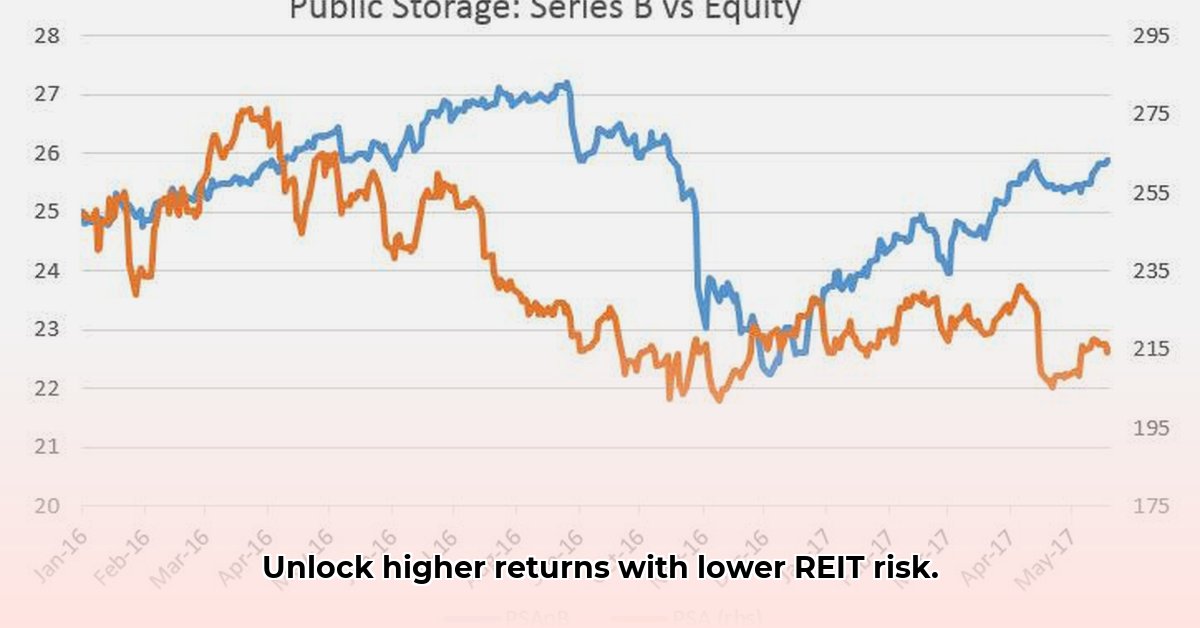
Understanding REIT Preferred Stock: A Beginner's Guide
REIT preferred stock offers a potentially lucrative investment opportunity, providing higher dividend yields than many traditional investments. However, this higher yield comes with increased risk. This guide will equip you with the knowledge to navigate this investment landscape effectively, balancing potential rewards with inherent challenges. We'll explore strategies for maximizing returns while minimizing risk, covering topics crucial for both novice and experienced investors.
Are you ready to learn how to potentially boost your investment income while managing risks associated with REIT preferred stock?
The Allure of High Yields
One of the most attractive features of REIT preferred stock is its potential for higher dividend yields compared to common stocks or bonds. Yields can often surpass 6%, sometimes reaching significantly higher levels, depending on market conditions and issuer characteristics. This enhanced yield stems from the fact that REITs frequently use preferred stock as a financing mechanism for their real estate projects. However, it's crucial to remember that higher yields often accompany higher risk. This increased risk necessitates a thorough understanding of the investment before committing capital.
What is your comfort level with higher risk for potentially higher returns?
Diversification: The Cornerstone of Risk Management
The REIT preferred stock market is diverse, encompassing various property types (residential, commercial, industrial, etc.) and geographic regions. Smart investing involves diversification—spreading your investments across multiple REIT sectors and geographic areas. This strategy reduces the impact of any single sector's underperformance, cushioning your portfolio against significant losses. Think of it like not putting all your eggs in one basket; diversification is your safety net.
How can you effectively diversify your REIT preferred stock portfolio to mitigate risk?
Types of REITs to Consider:
- Residential REITs: Focus on apartment buildings and other residential properties.
- Commercial REITs: Invest in office buildings, retail spaces, and other commercial real estate.
- Industrial REITs: Focus on warehouses, distribution centers, and other industrial properties.
- Healthcare REITs: Invest in hospitals, medical offices, and other healthcare facilities.
- Hotel REITs: Invest in hotels and resorts.
- Mortgage REITs: Invest in mortgages and mortgage-backed securities.
Navigating the Tax Landscape
A critical factor often overlooked is the tax treatment of REIT preferred stock dividends. Unlike some other dividends, those from REIT preferred stock frequently fall under different tax regulations, resulting in a potentially higher tax burden. This reduced tax efficiency is a real cost that must be factored into your overall return calculations. Always consult with a tax professional to understand the full tax implications of your investment.
How does the tax treatment of REIT preferred stock dividends impact your overall return?
Interest Rate Sensitivity: A Key Consideration
The value of REIT preferred stock is highly sensitive to interest rate fluctuations. Generally, rising interest rates lead to a decrease in REIT preferred stock prices, and vice-versa. This inverse relationship stems from the fact that higher interest rates make newly issued preferred stocks more attractive, reducing demand (and thus the price) of existing shares. Understanding this dynamic is paramount for effective investment management.
How will you adjust your strategy in response to interest rate changes in the REIT preferred stock market?
Call Dates and Liquidity: Understanding the Fine Print
Many REIT preferred stocks have call dates, meaning the issuing company may redeem the shares before their maturity date. This can impact your investment horizon, especially if you planned on a long-term hold. Liquidity—the ease with which you can buy or sell a stock—also varies across different REIT preferred stocks. Some trade frequently, while others are less liquid.
What is your investment timeframe, and how will call dates potentially impact your plan?
The Protective Shield of Cumulative Dividends
A significant advantage of many REIT preferred stocks is the cumulative nature of dividends. If the issuer experiences financial difficulties and misses a dividend payment, this missed payment is not lost. Instead, it accumulates and must be paid before any dividends are paid to common stockholders. This feature offers a degree of protection for investors.
How does the cumulative nature of dividends in REIT preferred stock provide protection against financial hardship of the issuer?
Risk Assessment and Mitigation Strategies
Let's summarize key risks and their associated mitigation strategies:
| Risk Factor | Mitigation Strategies |
|---|---|
| Interest Rate Risk | Diversification, hedging strategies (for sophisticated investors) |
| Call Risk | Carefully analyze call dates and yields before investing |
| Credit Risk (Issuer Default) | Thoroughly research the financial health of the issuer |
| Liquidity Risk | Invest in actively traded issues, maintain smaller position sizes |
Actionable Steps for Successful REIT Preferred Stock Investing
For Individual Investors:
- Diversify: Spread your investments across various REIT sectors and geographic regions.
- Monitor Interest Rates: Stay informed about interest rate trends and their potential impact.
- Analyze Call Dates: Carefully evaluate call dates before investing in any specific stock.
For Institutional Investors:
- Conduct Due Diligence: Perform comprehensive research on each REIT preferred stock issue.
- Utilize Hedging: Explore hedging strategies, such as interest rate swaps, to reduce risk.
- Exploit Inefficiencies: Identify and profit from discrepancies between call dates and yields.
Remember: This guide serves for educational purposes and is not financial advice. Consult a financial advisor before making any investment decisions.
Conclusion: Charting Your Course to Smart REIT Preferred Stock Investing
REIT preferred stocks provide a compelling investment opportunity, but success hinges on understanding both their upside potential and inherent risks. By employing a diversified portfolio, diligently analyzing issuer financials, and staying abreast of market trends, you can significantly enhance your chances of achieving profitable returns. Remember that education and planning are your most valuable assets in this dynamic investment landscape. Consider following reputable financial news sources and engaging with a financial advisor to guide you towards informed decision-making.